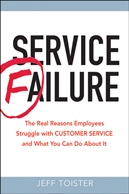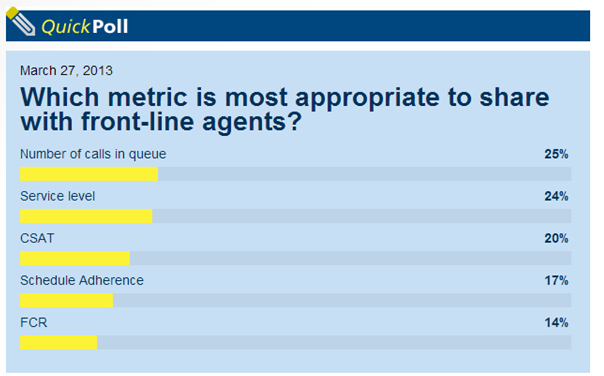The lazy customer service manager
 Jeff Toister
Jeff Toister  Thursday, June 27, 2013 at 9:00AM |
Thursday, June 27, 2013 at 9:00AM |  I’m feeling a bit lazy. My mission is to write this blog post, but I really don’t want to invest the effort necessary to write a good one. The way I see it, I have three options:
I’m feeling a bit lazy. My mission is to write this blog post, but I really don’t want to invest the effort necessary to write a good one. The way I see it, I have three options:
- Republish something I’ve already written for someone else
- Embed a funny YouTube video that somehow makes a point about service
- Draw inspiration from someone else.
Let’s go with option 3 because I already have someone in mind: The Lazy Customer Service Manager. Before I go on, please excuse any snarkiness. I’m too lazy to edit that out today.
The Lazy Customer Service Manager: A Profile
I’ve met a lot of customer service managers. The great ones work tirelessly to help their team deliver world class service and the results speak for themselves.
The lazy ones work tirelessly to find shortcuts. Most of those shortcuts don’t work. Their results speak for themselves too.
Here are a few examples.
Perfect Attendance Awards
The idea behind this motivational gimmick is that people need extra motivation to come to their lousy jobs on a regular basis. This seems to be especially popular in call centers. Perhaps this is because very few people have ever said, “You work in a call center?! Is it as glamorous as it sounds?”
The lazy manager thinks, “I know how to solve our absenteeism problem. We’ll create a perfect attendance award where everyone who has perfect attendance for a month will be entered into a drawing. The winners of the drawing will get to spin a prize wheel for a chance to win fabulous prizes such as candy, gift cards, and (ironically) a day off with pay.”
That was a real example. I so wish I was making this up.
Great customer service managers take a slightly different approach. They focus on making the workplace a great place to be so people will naturally want to come to work.
Suggestion Boxes
There are a number of reasons why the lazy manager will put out a suggestion box. Perhaps the manager read an article somewhere that the best companies ask their employees for input. Maybe Office Depot is having a sale on suggestion boxes. It could be that the manager is just looking for a way to get employees to stop complaining directly to him. The possibilities are endless.
One lazy manager I knew thought he was enlightened when he promised to post a written response to each suggestion on the team bulletin board. This practice quickly stopped when the vast majority of suggestions turned out to be complaints about working conditions, co-workers, and even the boss.
Again, I really wish I was making this up.
Great customer service managers skip the suggestion box and talk to their employees on a regular basis. They recognize that a true “open door” policy requires them to walk through their door and create an environment where employees will be comfortable enough share their candid opinions.
Incidentally, I did Google “suggestion box” as part of my exhaustive research for this blog post. Sharlyn Lauby has a good post on her HR Bartender blog called 7 Considerations for Suggestion Box Programs.
The Angry Memo
Serious customer service issues can sometimes arise. The lazy manager often addresses these issues via an angry memo that’s emailed to everyone on the team or perhaps posted on a bulletin board. Typically, only one or two people on the team are actually to blame, but the lazy manager finds it safer to get everyone involved rather than speak privately with the people who really need to hear the message.
One example comes from a restaurant in Boston where the owner allegedly posted this memo on an employee bulletin board in response to a bevy of customer complaints:
“You are the LOSERS!!!” … “Change or be changed. Please, don’t force your termination for the holidays.”
You can read more about the story on Patrick Maguire’s I’m Your Server Not Your Servant blog.
Great customer service managers skip the angry memo and constructively address issues as soon as they arise. For example, a customer complaint might be treated as a learning experience and met with a discussion on ways to improve service quality.
What are other characteristics of a lazy customer service manager?
Some might call this last part lazy since I’m basically asking you to finish this post for me by leaving your comments. I prefer to call it crowd-sourcing.
Whatever the term, please do share your own examples of signs that a customer service manager is being lazy.





